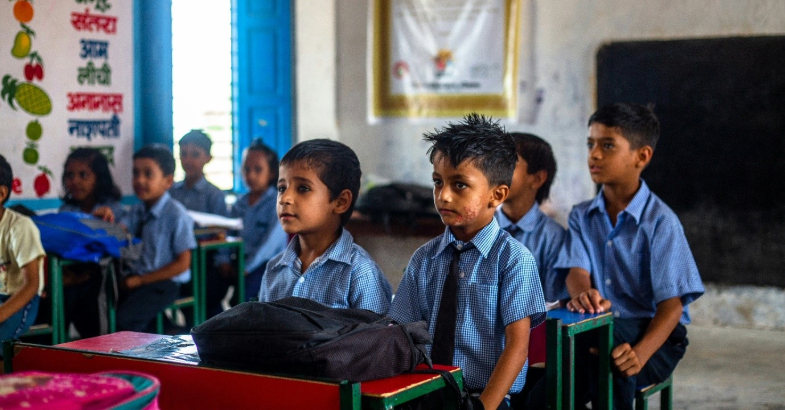
Introduction
In a government school on the outskirts of Madhya Pradesh, rows of brand-new tablet computers sit neatly stacked inside a locked cupboard. When asked why they aren’t in use, the teacher shrugs, “The electricity supply is erratic. And we haven’t received any training to use them.” Meanwhile, students continue with chalk and blackboard, unaware they are part of a ‘Digital India’ pilot. This isn’t an isolated incident but a reflection of a broader issue in Indian governance: policies that look impressive on paper often falter during implementation. From digital health records to smart cities and rural electrification, India usually garners global praise for its innovative developmental schemes. However, the ground reality tells a more poignant story.
The Paradox of Form Over Function: India’s Isomorphic Mimicry in Welfare Systems
Coined by Lant Pritchett, Michael Woolcock, and Matt Andrews, “Isomorphic Mimicry” describes situations where governments adopt the form of functioning institutions like dashboards, digital apps or global best practices without developing the actual capabilities to make them work. Developing countries aim to imitate richer countries in the hopes that they will become rich too, but it is mimicry in form, not function and that makes all the difference. India’s cashless welfare system modelled on global fintech models like Kenya’s M-Pesa has failed on the ground. According to the Comptroller and Auditor General’s 2022 report on Direct Benefit Transfers (DBT) in Jharkhand, over INR20,000 crores were transferred in welfare benefits to nearly three crore individuals between the years 2017 and 2021. But over half of that –INR11,700 crores were routed through Aadhar linked systems. This system suffers from authentication errors, inactive accounts and non-KYC bank accounts. The CAG report thus highlights India’s policy paradox: we have mastered the art of policy design just not the part where it reaches the people it’s meant to serve.
Gaps in Policy Implementation
Swachh Bharat Abhiyan (Clean India Mission)
Over 110 million toilets have been built nationwide under this mission, aiming to eliminate open defecation. But in many rural pockets, these toilets remain unused. A study published in the Journal of Education and Health Promotion indicates that despite this massive infrastructure push, nearly half of the rural population (52.1%) still defecate in the open. Key challenges include no running water, lack of awareness, poor construction quality and maintenance etc. Moreover, garbage continues to pile up along roadsides, seldom making it to waste management facilities revealing a persistent blind spot in urban sanitation delivery. What was envisioned as a sanitation revolution has, in many a cases become a checklist exercise for the authorities: short on behavioural change and long on construction.
Ayushman Bharat Digital Mission (ABDM)
This flagship initiative aimed to digitise India’s healthcare system through unique Health IDs, electronic medical records and tech-driven service delivery. As of today, over 78 crores Ayushman Bharat Health Account (ABHA) IDs have been generated under the scheme however the real disconnect becomes clear as one walks into a rural clinic. Superficially, 71% of these IDs have been linked to digital health records. However, it is important to note that digital integration of public health facilities including Primary Health Centres (PHCs), Community Health Centres (CHCs), District Hospitals (DHs) etc under ABDM is still barely 30%. Thus, it does not come as a surprise that many of these PHCs lack stable electricity, internet access and digital infrastructure. As of 2019-20, Government health expenditure (GHE) as a percentage of GDP was 1.35%, which is significantly lower that India’s counterparts – China at a notable 5.3% followed by Bangladesh at 2.5%. The promise of digital health is thus not a tool, but a distant ideal for a frontline health worker navigating long patient queues, crumbling infrastructure and outdated medical records.
Smart Cities Mission
The Smart Cities Mission envisions transforming urban areas with advanced infrastructure and technology. But for millions of city dwellers, basic urban issues like reliable garbage collection, clean drinking water, affordable housing remain unresolved. For instance, in Mohali, a district of Punjab, a combined Rs. 5 plus crores have been sanctioned in the past year to install processing machinery at all 14 Resource-Management Centres (RMCs) for the city’s 100 MT/day waste load and upgrade the existing RMC sites. Despite these efforts, the city continues to battle operational delays, overflowing waste in several areas and legacy dump fires. At the Sector 91 dump, 90,000 MT of old waste remains uncleared with just 600 tonnes processed daily despite trommel machines in place highlighting the stark gap between technological initiatives and on-ground realities A thousand kilometres away – Indore, on the other hand has emerged as a national model for urban waste management under the Smart Cities Mission. The city has achieved 100% door-to-door waste collection, complete segregation at source and decentralised composting units across wards. It has consistently been ranked as India’s cleanest city since 2017. A city may look ‘smart’ on paper but without foundational capacity, the impact is often superficial. Political will and citizen participation is thus required for a sustainable change.
The Root Cause: Weak State Capacity
At the core of India’s implementation challenges lies a chronic issue of weak state capacity which is the ability of institutions to plan, coordinate, and deliver services efficiently and equitably. India is home to skilled policy architects and reform visionaries, however, the systems responsible for translating those visions into reality- district officers, municipal staff, teachers, health workers are often undertrained, overburdened, and lack structural support. Michael Lipsky’s concept of “street-level bureaucrats” is particularly instructive here; it is these individuals, operating at the frontline, whose daily decisions shape how citizens experience the state. Yet, they are the ones left without adequate tools, incentives, or institutional backing and even the most well-designed policies falter. The consequences are not merely administrative, they are profoundly human. Benefits are denied to a pregnant woman due to failed biometric authentication. Under digital initiatives, schools receive tablets, but the teachers often lack the know-how and even a reliable internet connection. Lost in a maze of paperwork, a farmer registered under PM-KISAN may not receive the promised assistance. These are systemic signals of a broken delivery mechanism, not isolated incidents.
Breaking the Mimicry Cycle: Steps Forward
When does real change happen? Contrary to what many of us might think, it is neither a well drafted policy presented in the Parliament nor an impressive foolproof plan on paper, rather real change happens when people feel that change in their daily lives. And for that, India needs to reorient its focus; from designing grand policy blueprints to strengthening the everyday systems that actually deliver on those promises.
There is a lot to learn from countries like Brazil where health care reform did not just come from policies passed in offices, it came from the ground up. Through the Sistema Único de Saúde (SUS), Brazil focused on building a form of decentralised healthcare through local administrative capacity while actively involving communities in shaping the services they needed. This approach did not rely on imported templates but evolved organically through iterative reform, improving both access and outcomes over time. Similarly, in India, “policy labs” or “capacity-building hubs” can be set up at regional levels to train and support district/ municipal level officials in data analysis, community outreach and holistic management.
One size fits all, rigid, top-down programmes often fail to account for India’s social and geographic diversity, an alternate is Problem Driven Iterative Adaptation (PDIA). According to this approach, teams iteratively test small changes, reflect on outcomes and scale what works. For example, a block health office in Uttar Pradesh could pilot weekend immunization camps at schools gathering feedback through suggestion boxes and expanding the model to other municipalities after a sustained rise in footfall.
To amplify rapid feedback mechanisms, the government can partner with leading telecom providers like Jio to subsidise data access for government feedback platforms, lowering barriers for rural and remote users. An initiative to distribute affordable devices pre-loaded with offline-capable apps in local languages and simple interfaces will boost real-time reporting of operational gaps by frontline users (e.g., ASHA workers, school teachers, sanitation inspectors etc).
Finally, and most importantly, giving communities a voice to participate in governance through avenues like school management committees or local health councils can build accountability from the ground up. Rwanda is a great example where the practice of peer-review among communities of health workers helps address challenges locally and is a testament to frontline-driven governance.
In Conclusion
To sum up, the future of Indian policymaking does not lie in superficial KPIs, technological showpieces or global recognition, but in the mundane, long term, capacity-driven reform that ensures state systems respond to local needs with resilience, accountability and credibility.

Author’s Bio:
Khyati Kaul is currently pursuing her Masters in Economics, after completing her undergraduate degree in Economics Honours from Shri Ram College of Commerce, University of Delhi. Driven by a desire to apply academic insights to real-world policy challenges, she has a keen interest in research at the intersection of energy and environment, behavioural economics and political economy.

